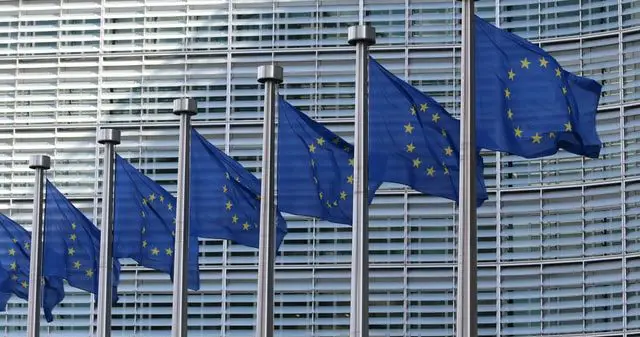The New 2021 EU Climate Plan will affect the real estate industry to a great extent. But what has happened exactly and what are the necessary steps to take for a more sustainable future according to the EU?
On the 14th of July 2021, the European Commission presented their updated and extended version of proposals to fight global climate change. These measures should help the European Union to reach their goals of being carbon neutral or creating “net-zero” emissions by the year 2050.
This plan includes 14 climate targets that should be in place by 2030. Some examples are: Renewable Energy Directive, Alternative Fuels Infrastructure Regulation, Effort Sharing Regulation, Energy Taxation Directive, EU Forest Strategy, and Emissions trading for road transport and buildings.
These new targets will undeniably affect every industry, but there are some that might be even more in the focus for the EU. One of them is the real estate industry. The reason for that is, that buildings account for around 39% of the global energy-related CO2 emissions and 36% of the energy consumption. By improving real estate to a great extent, the “net-zero” goal of 2050 can be reached faster.
In the following article, we will highlight the concrete measures and rules that will apply, and provide more detailed information on what the new 2021 EU climate plan means for real estate.
The 2021 EU Climate Plan and Real Estate
The new EU climate plan is a set of proposals that lay a foundation for the 2030 climate goals. They will impact every industry, but especially the real estate sector because of its large environmental impact. Changes that might now come into place are incentives and laws for using renewable energy and fuels, implementing energy-efficient technologies, expanding the emissions trading system, and creating a social sustainability fund. All of this will help to renovate the majority of residential, commercial and public buildings.
General Concept
The overall goal of the EU is to make Europe the first climate neutral continent in the world by the year 2050. This path began to form in 2019, when the European Commission introduced the so-called “European Green Deal”, which is a concept of ideas to reach their ambitious target in the upcoming decades.
Afterwards, in March 2020, a climate law has been proposed that writes the “net-zero” goal of 2050 down in a binding legislation. Until April of this year, it has been discussed and changed with new targets for 2030. After an agreement was reached with all the EU member states, it entered into force in June.
What has now been added to the climate law, is a package of proposals that will help us reach the goals for the year 2030. What makes these new changes so important for today, is that they will come into force as soon as possible and thus transform all industries to a great extent. Companies, governments and the society will have to adapt to these new rules.
The goal is to create a change that has a positive impact not only on the environment, but also the society and economy. Main topics that are of special importance are the following: Making transport sustainable for all, Leading the third industrial revolution, Cleaning our energy system, Renovating buildings for greener lifestyles, working with nature to protect our planet and health, and boosting global climate action.

Changes for the Real Estate Industry
The EU climate plan has a focus on real estate, because of its high environmental impact. Everyone has to live in some kind of housing and often sustainability was not the main point, at least within the last few decades. Since buildings account for nearly 40% of global energy related CO2 emissions and 36% of energy consumption, it is clear that it will be of great importance for the EU’s climate plan.
The exact proposals delivered by the EU are:
- “The revised Energy Efficiency Directive and Renewable Energy Directive will make buildings more energy efficient and boost the use of renewable energy in buildings.”
- “The new Effort Sharing Regulation sets emission reduction targets for all Member States by 2030 for sectors including buildings.”
- “Emissions Trading for building fuels will speed up emissions reductions and stimulate investments in renewables and energy efficiency.”
- “The new Social Climate Fund, funded by revenues from emissions trading in road transport and buildings, will provide financial support to citizens, in particular the vulnerable households, to invest in renovation or heating systems and ensure a fair transition.”
(All of this information can be found on the European Green Deal section from the European Commission)
These new proposals mean that the majority of buildings have to be renovated, in order to comply with the climate plan. To speed up this process, there are new incentives and regulations that help homeowners, developers and investors.
Renewable Energy Directive
- Helps to integrate new, renewable technologies and storage facilities into the existing energy grid
- Promotes the cooperation between member states to exchange energy
- Provides strong incentives to utilize electric technologies and new types of fuel
- Incentivising energy efficient buildings (Smart/Green Buildings) and the reusability of resources and energy
Energy Efficiency Directive
- Indicative member state contributions to the energy efficiency target
- Legal requirement to first address energy efficiency when developing and investing into real estate
- Member states have to renovate 3% of public buildings floor area per year and reduce their energy consumption by 1.7% per year
- Using energy performance contracts for renovating large non-residential buildings
- Prioritizing vulnerable and poor households with energy efficiency measures
- Basic contractual rights on heating, cooling and hot water
Emissions Trading for Fuels
- Putting a price on non-clean fuels and thus incentivising renewable alternatives
- Finance the social climate fund
- New complementing carbon price on domestic heating
- Increase revenues by using emissions trading to fund more and more renovations
Social Climate Fund
- Using revenues from the emissions trading system to benefit vulnerable and energy-poor households
- Support national investments into building renovation
More information about the EU climate plan for the real estate industry will be published later this year. In addition, changes to these proposals are most likely to occur since they will now be discussed with member states and governments. Smart-CRE will report on any news regarding sustainability in the building sector and if you want to stay up-to-date, feel free to subscribe to our newsletter for free (on the right side of the article).

Conclusion
The EU’s climate plans are getting more advanced and have to be implemented as soon as possible in order to reach the 2030 goals. Every sector will be impacted by these new proposals and the EU climate plan for the real estate industry is going to be significant.
Once an agreement is reached with all the member states, the number one task will be to renovate buildings. This includes residential, commercial and public real estate. Many incentives have been introduced to promote energy efficiency and renewable sources of energy. By using the emissions trading system, green building companies can be rewarded for implementing new sustainable technologies and a social climate fund can be financed.
If you want to learn more about green buildings and how these can create a positive ROI within a short amount of time, feel free to take a look at our other articles.
